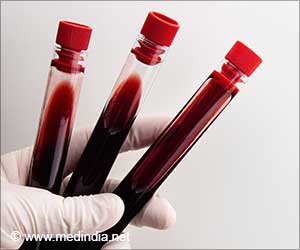Calls made on cellular phones have no negative impact on hospital medical devices.
Calls made on cellular phones have no negative impact on hospital medical devices, according to Mayo Clinic researchers. The new finding has dispelled the long-held notion that they are unsafe to use in health care facilities.
In a study published in the March issue of Mayo Clinic Proceedings, researchers say normal use of cell phones results in no noticeable interference with patient care equipment. Three hundred tests were performed over a five-month period in 2006, without a single problem incurred.Involved in the study were two cellular phones, which used different technologies from different carriers and 192 medical devices. Tests were performed at Mayo Clinic campus in Rochester.
The study’s authors say the findings should prompt hospitals to alter or abandon their bans on cell phone use. Mayo Clinic leaders are reviewing the facility’s cell phone ban because of the study’s findings, says David Hayes, M.D., of the Division of Cardiovascular Diseases and a study author.
Cell phone bans inconvenience patients and their families who must exit hospitals to place calls, the study’s authors say.
The latest study revisits two earlier studies that were done ‘in vitro’ (i.e., the equipment wasn’t connected to the patients), which also found minimal interaction from cell phones used in health care facilities. Dr. Hayes says the latest study bolsters the notion that cells phones are safe to use in hospitals.
Other Technology-Related Proceedings Articles Explore Concerns for Patients
Advertisement
A letter to the editor published in the journal details the first known case of a portable CD player causing an abnormal electrocardiographic (ECG) recording within a hospital setting. The recording returned to normal when the CD player, which the patient was holding close to the ECG lead, was turned off.
The anti-theft devices are commonly placed near store exits and entrances, triggering an alarm if customers leave with merchandise that was not purchased. In two instances in Tennessee, customers with a pacemaker and an implantable cardiac defibrillator experienced adverse reactions after nearing anti-theft devices.
The devices triggered the adverse reactions, sending both patients to emergency rooms for evaluation. The report’s authors recommend that the anti-theft devices be placed in areas of stores where customers won’t linger -- away from vending machines or displays of sale merchandise, for instance -- to help avoid future episodes.
Store employees also should be trained to move a customer who has collapsed near an anti-theft device when medically advisable, says J. Rod Gimbel, M.D, of East Tennessee Heart Consultants, and an author of the report. If they aren’t moved, they could experience recurring life-threatening malfunction to their implantable device, as did one patient who was described in the report.
“Simply moving the person away from the anti-theft device may save their life,” Dr. Gimbel says.
Though Gimbel’s report outlines only two cases of anti-theft devices causing implantable heart devices to malfunction, he asserts that similar instances are likely underreported, qualifying the problem as a potentially widespread public safety issue.
“Many times with public safety issues we wait until something bad occurs before we act,” Dr. Gimbel says. “Here’s an opportunity where we can make our knowledge public and head off future problems.”
In an accompanying editorial, John Abenstein, M.D., of Mayo Clinic’s Department of Anesthesiology, addresses the journal reports relating to the impact of technological devices on patient care equipment.
Dr. Abenstein says the risk of some technological devices upsetting the function of patient care equipment in hospitals appears to be small. The Food and Drug Administration (FDA) should take a more explicit stand on the matter, he says, so that health care facility policies can be altered when appropriate.
Source-Newswise
SRM





